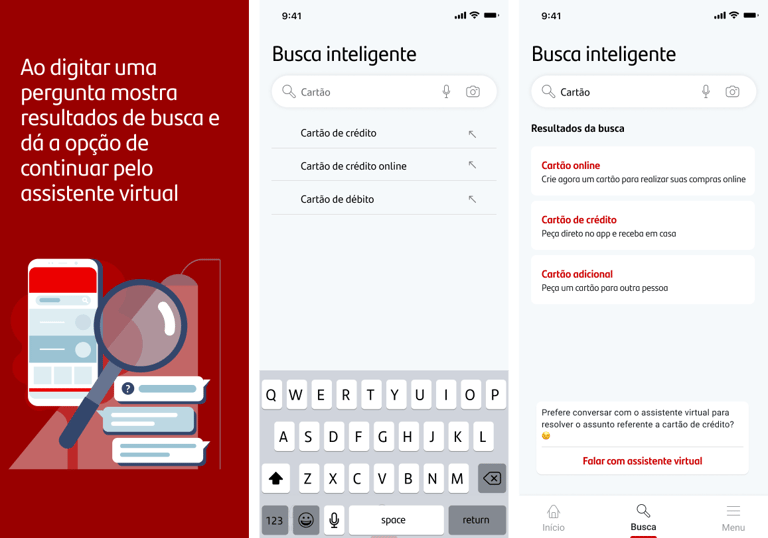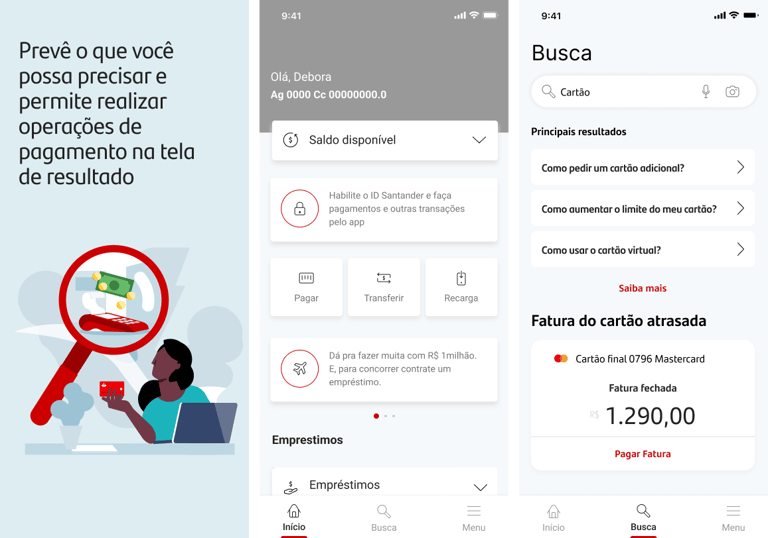Intelligent search design for banking app with generative AI
Challenge
The goal was to create an innovative search service for a banking app, integrating artificial intelligence in a transparent and user-friendly way. The main challenge was balancing technological innovation with usability, ensuring that AI was perceived as a helpful tool rather than an unwanted replacement for human support.
My role
Conceptual research: Conducted interviews and concept tests, validating hypotheses and demystifying perceptions about AI.
Experience architecture: Structured the final flow, integrating generative AI with established UX elements in the app.
Process
The project followed methodologies focused on technical alignment and user perception:
Internal alignment workshop: Collaborative sessions with bank stakeholders were held to define key concepts and testable hypotheses. This ensured the research focused on concrete business objectives.
Contextual concept tests: Developed interactive cards and prototypes simulating generative AI use in real scenarios (e.g., resolving fee-related questions, locating features). Each 90-minute session included:
Context understanding: Mapped how users interacted with AI daily.
Progressive validation: Concepts were presented gradually, collecting real-time feedback.
Participatory prioritization: Participants ranked the most relevant features, creating a priority list.
Segmented analysis: Results were categorized by user profiles (e.g., digital natives vs. conservative users), identifying patterns of AI acceptance and resistance.
*The company information has been withheld to ensure the protection of confidential data.
The research showed most users lacked clarity about AI’s everyday use and quickly associated the term with website chatbots, which were viewed negatively due to pre-defined responses. As a result, many preferred phone support or searching FAQs and external sites.
To address this, I delivered a flow integrating generative AI into the app’s search function. It explains user queries, guides them to solutions, and consistently references FAQ items. This approach aimed to make the experience more educational, trustworthy, and aligned with user expectations.
Results




